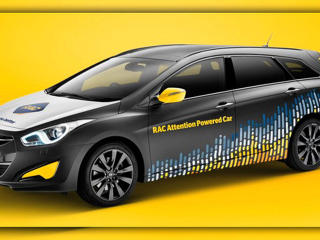Most drivers would not admit that they very rarely are giving 100 percent of their attention to the task of driving, but so many of them are, especially those that are inexperienced. So this year, Emotiv and the Royal Automobile Club of Western Australia have joined forces to come up with a slightly unusual solution for the dangers of driver inattention. The so-called Attention Powered Car features a neuroheadset made by Emotiv, creator of a range of electroencephalography-based monitoring gear.
When worn, the headset, known as the EPOC, measures electrical activity in the brain to gauge how focused the driver is on driving. The headset interfaces with custom software installed in the car, with any lapses in concentration resulting in the vehicle slowing down safely to about 9 mph as a way of alerting the driver to his or her inattention. In fact, the car — a Hyundai i40 — will only run at full capacity when it senses that drivers are giving their full attention to the task at hand. This is helpful to keep us paying attention, even though we should be already. Yet it could also be very dangerous – a lot of people see the highway as an opportunity to relax their minds from the stresses of driving since the speed is somewhat maintained and the roads are straighter. You wouldn’t want to suddenly find yourself slowing down when a huge tractor-trailer is behind you!
The impact of inattention is now comparable to the number of deaths and serious injuries caused by speed and drink driving, which are all contributors to Western Australia consistently having the worst fatality rate of any Australian state. Nationally, it is estimated that inattention was a factor in 46 percent of fatal crashes.
The prototype Attention Powered Vehicle is largely meant to bring attention to the issue of driver distraction, and also serve as a tool for investigating the problem further. Researchers have been using the car (on a track) to test how various tasks, such as switching radio stations or sending a text message, impact a driver’s attention. Factors measured include blink rate and duration, eye movement, and head tilts.



